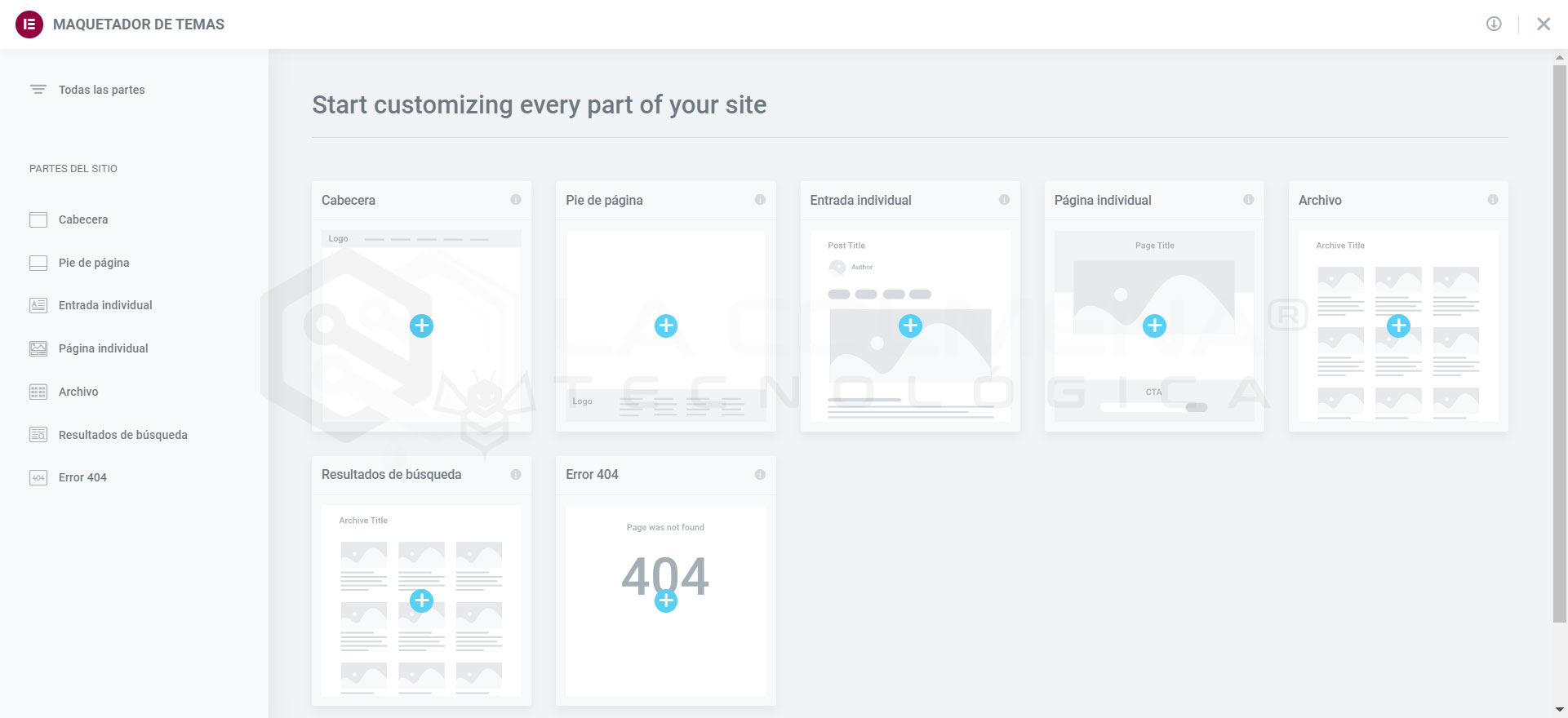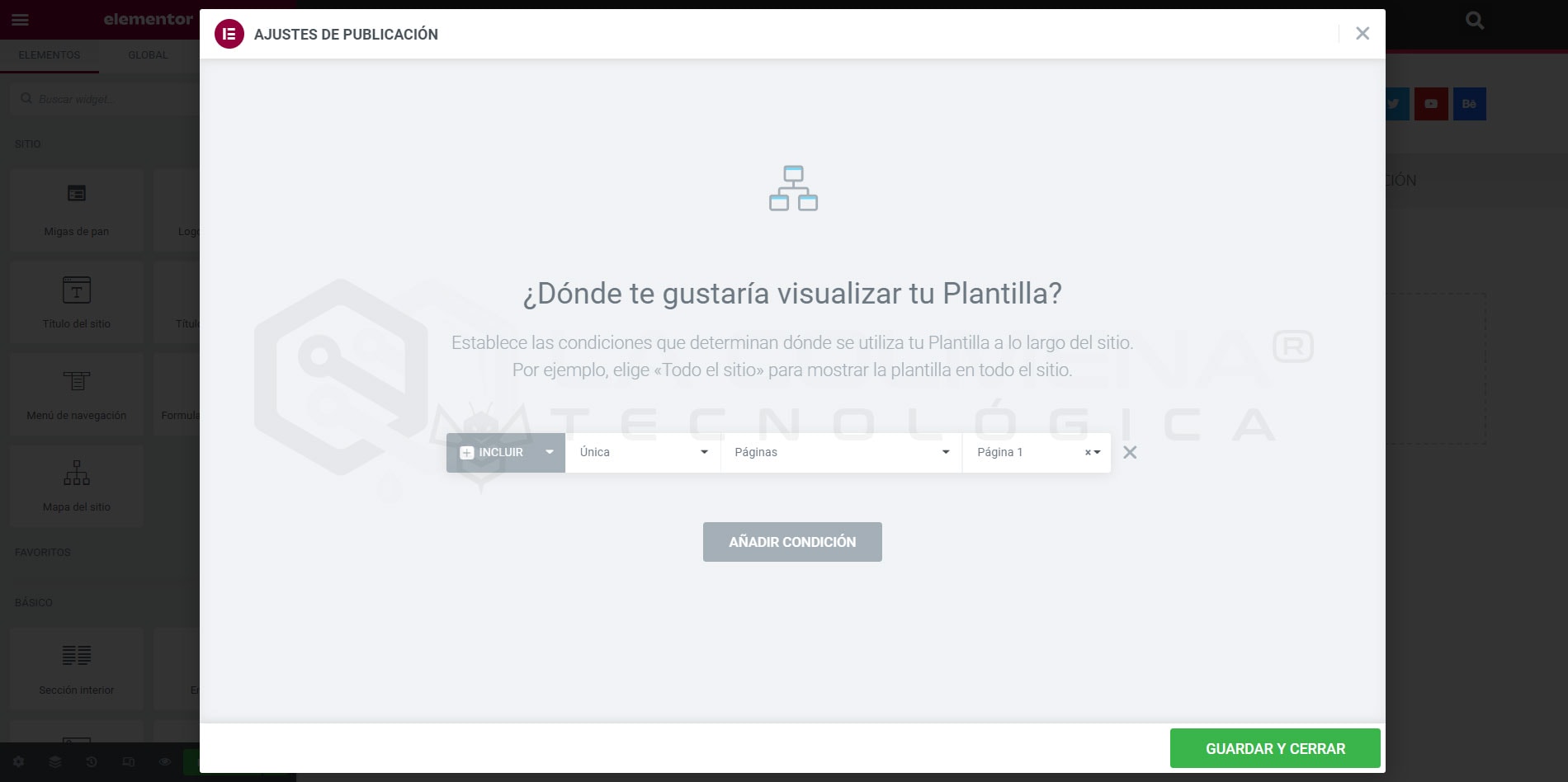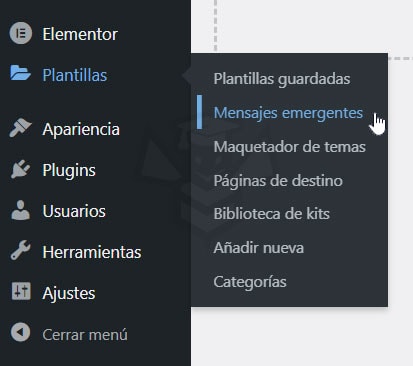Elementor display conditions
> Introduction to Elementor, Templates
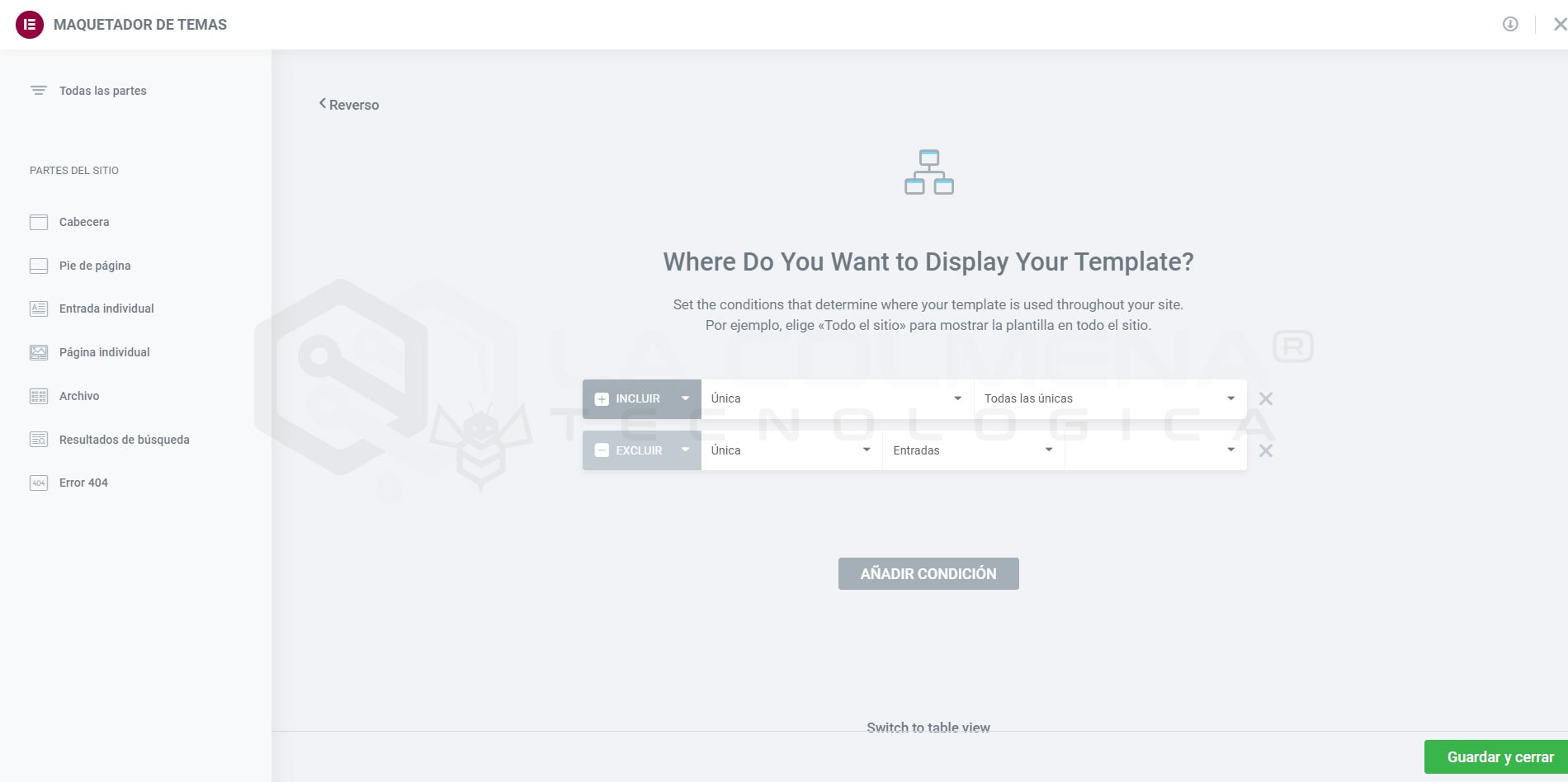
- Viewing conditions
- What are viewing conditions?
- Diagram of display conditions
- Examples of display conditions
Viewing conditions
In another topic we have seen how to set or modify the display conditions, in this topic we will explain what they are and how we can use them. Starting with version 2.0 Elementor added global templates such as the Header and Footer. These templates will be displayed throughout your site or on any combination of pages of your choice.
What are viewing conditions?
With Display Conditions, we can set exactly where each template will be displayed, either site-wide, on all pages, on all posts, in a certain category, taxonomy or on a specific page. Each condition setting allows you to include or exclude a condition.
For example, we have a Header template with the condition Include Entire Site. We can add a second Exclude condition for a specific page: let’s use the Cover Page. In this way this Header will be in all the website except in the Home Page.
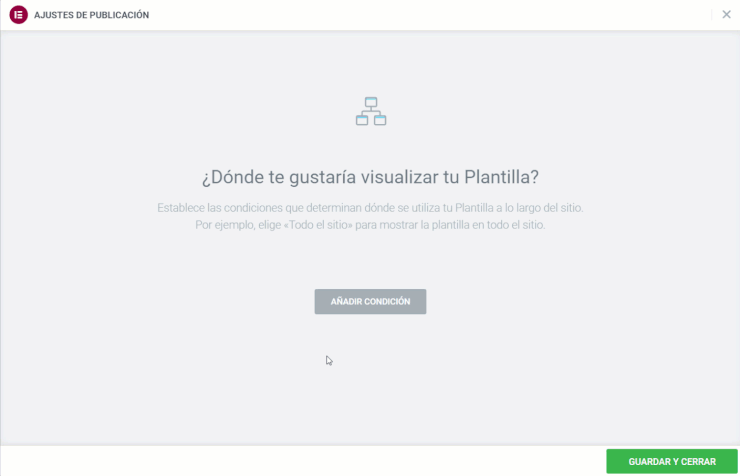
Note: display conditions can be used only in Theme Designer templates. You can create more than one header and assign it to different areas on your site.
Diagram of display conditions
Depending on whether we select INCLUDE or EXCLUDE these conditions will cause a global template of the theme layout to be displayed (INCLUDE) or not to be displayed (EXCLUDE).
What is an Archive in WordPress? The archives are all listings of publications that have something in common. For example, the entries archive is a list of all published entries. You can list a file based on a publication date, content type, author or taxonomy.
- General
- Entire site (displayed site-wide)
- Archives
- All files
- Author’s file
- All (in any author’s file)
- Allows you to select an existing author (only in the selected author’s file).
- Filing date (e.g. when entries for January 2022 are ready – https://dominio.com/2022/07/)
- Search results (in the file displayed when searching by keyword)
- Archive of entries
- Archive of entries
- Categories
- All (all category archives)
- Allows you to select an existing category (only in archives of the selected category – https://dominio.com/category/noticias/)
- Direct child category of (archives of direct child subcategories of a category but not in the child subcategories of these subcategories)
- All (archives in all subcategories of any category but not in the children of these subcategories)
- Allows you to select an existing category (only in subcategory archives of the selected category, but not in the child subcategories of these subcategories)
- Any child category of
- All (archives of all subcategories of any category and also in the children of these subcategories)
- Allows you to select an existing category (only in subcategory archives of the selected category and also in the child subcategories of these subcategories)
- Tags
- All (the file of any label)
- Allows you to select an existing tag (only files of the selected tag – https://dominio.com/tag/oferta/)
- Single (single refers to individual pages or individual posts, i.e. a single publication such as an entry or a page)
- All unique (all individual pages, posts and also if we have Custom Post Types)
- Cover page (refers to the page we have selected as home page in Settings > Reading)
- Entrance
- Tickets
- All (all entries)
- Allows you to select an existing entry (only the selected entry will be displayed)
- In category
- All (will be displayed in all entries that have at least one category assigned to them)
- Allows you to select an existing category (only entries that have the selected category assigned to them will be displayed)
- In a child of Categories
- All (entries that have any subcategory assigned to them)
- Allows you to select an existing category (only entries that have been assigned any direct or indirect child subcategory of the selected category will be shown)
- In Etiquette
- All (entries that have any tag assigned to them)
- Allows you to select an existing category (only entries that have the selected tag assigned to them will be displayed)
- Entries by author
- All (entries by any author)
- Allows you to select an existing author (only the entries of the selected author will be displayed)
- Tickets
- Page
- Pages
- All (all pages)
- Allows you to select an existing page (will only be displayed on the selected page)
- Pages per author
- All (pages of any author)
- Allows you to select an existing author (only the pages of the selected author will be displayed)
- Pages
- Landing pages
- All (all landing pages)
- Allows you to select an existing landing page (will only be displayed on the selected landing page)
- Media
- Media
- All (in all media documents)
- Allows you to select an existing medium (will only be displayed in the document of the selected medium)
- Media by author
- All (in the media documents of any author)
- Allows you to select an existing author (only the selected author’s media documents will be displayed)
- Media
- Direct son of
- All (on all pages and CPTs if there are hierarchical members who are direct children of another)
- Allows you to select a page or CPT (the direct child pages or CPTs of the selected page or CPT)
- Any child of
- All (on all pages or CPTs that are children, grandchildren, …)
- Allows to select a page or CPT (the pages or CPTs children, grandchildren, … of the selected page or CPT)
- By author
- All (in all documents of any author)
- Allows you to select an author (on the selected author’s page, entry, media, CPT, …)
- 404 page (only on the default 404 page that is displayed when the URL you are trying to access does not exist)
Examples of display conditions
Set a Header or Footer for our entire website

All the assignments we can make in Unique for example Unique > Tickets > All, Unique > Pages > All, … prevail over Entire sitethat is, if we create a Header or Footer and assign it to Unique > Tickets > AllThis takes precedence over the Header or Footer that we assign to Entire site and all Entries will have a different Header or Footer than the rest of the website.
Set a Header or Footer for our entire website except for the home page.

With this configuration we should create a different Header or Footer and assign it to the Cover Page.
Set a different Header or Footer to the Blog Posts.

If we do this we must have already assigned a Header or Footer for the rest of the website or the entire site.
Set a Header or Footer for a specific page.

In this case we assign this Header or Footer to a page with the title “Page 1”.
Set a Header or Footer for entries that have the “News” category assigned to them.

As you can see there are very specific configurations that will allow you to customize your site to the maximum.

Subscribe and receive notices of new content
Related topics
Header and Footer template in Elementor
true
13:21
0.0/5
Introduction to Elementor, Templates
{{ reviewsTotal }}{{ options.labels.singularReviewCountLabel }}
{{ reviewsTotal }}{{ options.labels.pluralReviewCountLabel }}
{{ options.labels.newReviewButton }}
{{ userData.canReview.message }}
